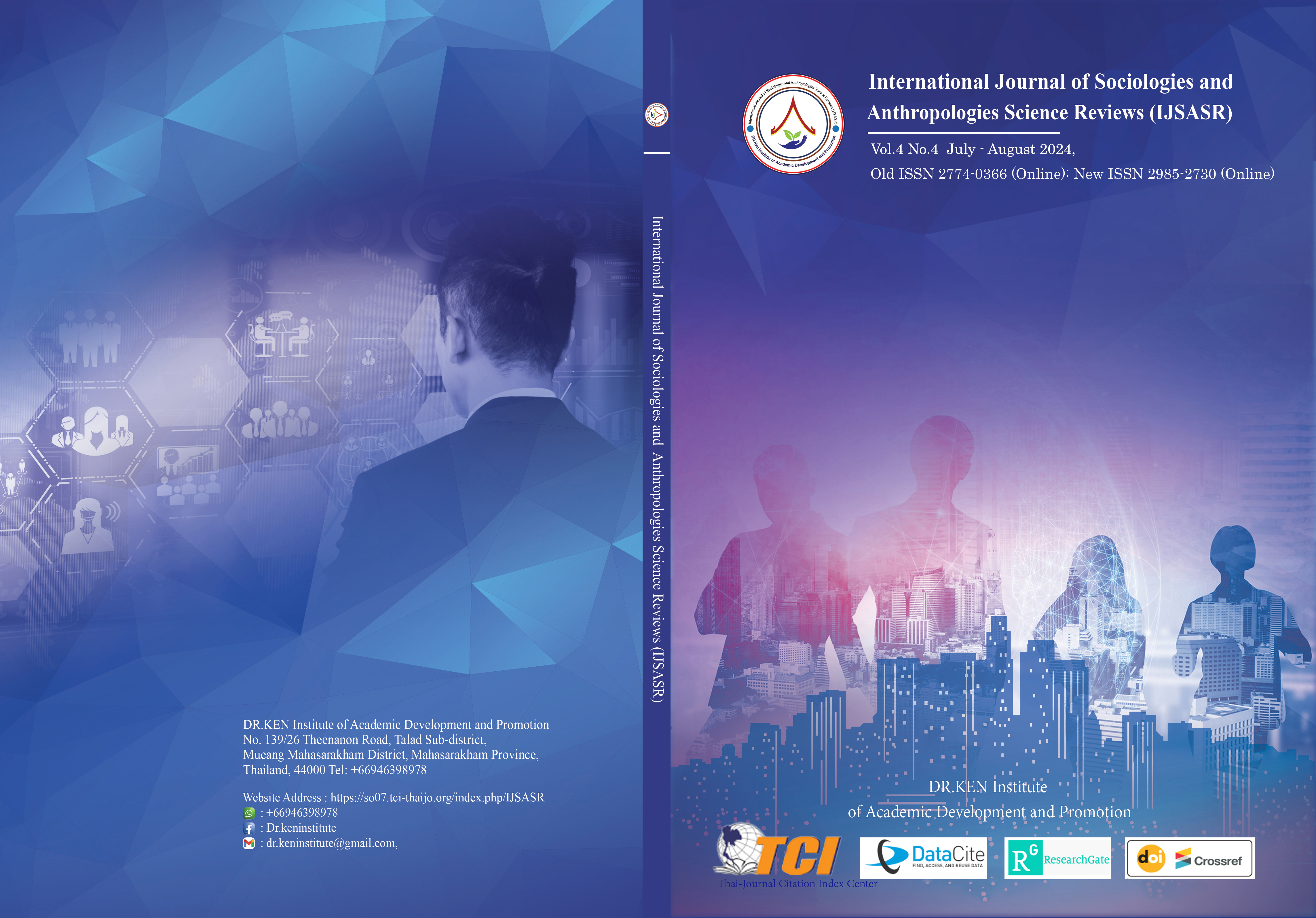A Brief Analysis of the Craftsmanship and Dressing Characteristics of the Derung Traditional Costumes
Main Article Content
Abstract
Background and Aim: The Derung people, recognized as the smallest ethnic minority within the 25 aboriginal ethnic groups in Yunnan Province, are distinct for their traditional costumes, religious beliefs, cultural customs, and aesthetic characteristics. Transitioning directly from a primitive society to a socialist society with the establishment of New China, the Derung encountered Han culture. A notable aspect of their culture is the absence of a written language, relying instead on oral transmission for cultural inheritance. This has contributed to the gradual disappearance of Derung traditional clothing culture. On December 27, 2022, the skill of making Derung blankets was acknowledged as part of the fifth batch of provincial intangible cultural heritage representative projects in Yunnan Province. This article delves into the exploration of Derung traditional costumes, focusing particularly on the Derung blanket, to analyze its production, color, and shape structure, thereby understanding the evolution of Derung clothing technology, as well as the artistic and cultural significance of its structure and wearing form.
Materials and Methods: Employing a literature review method, this study gathers graphic and textual materials pertinent to the Derung blanket, achieving a preliminary understanding of the origin and development status of Derung traditional clothing. Additionally, it utilizes empirical research methods to further investigate the Derung blanket, examining its unique wearing method, shape, and color features, which highlight its distinctiveness, deep cultural connotation, and the unique aesthetic orientation of the Derung people from primitive society to the present.
Results: The research finds that the materials used in Derung blanket production are simple, with the colors being chosen by the women, rendering each blanket unique. The structure and wearing form of the Derung blanket align with the characteristics of one-piece, unstructured clothing, preserving the legacy of the original "one-piece style" structure. This exploration and analysis provide theoretical support for further studies on the inheritance and development of Derung traditional clothing, suggesting the potential to leverage modern clothing development trends and concepts, innovations in design methods, and advancements in process technology and materials for the continuous development of the Derung people.
Conclusion: This comprehensive investigation into the Derung blanket not only offers a foundational understanding of Derung traditional clothing's current state and origins but also underscores the importance of cultural preservation and innovation. By integrating modern trends and technologies with traditional practices, there's a promising pathway towards revitalizing the traditional clothing culture of the Derung people, ensuring its survival and relevance in contemporary society.
Article Details

This work is licensed under a Creative Commons Attribution-NonCommercial-NoDerivatives 4.0 International License.
Copyright on any article in the International Journal of Sociologies and Anthropologies Science Reviews is retained by the author(s) under the under the Creative Commons Attribution-NonCommercial-NoDerivatives 4.0 International License. Permission to use text, content, images, etc. of publication. Any user to read, download, copy, distribute, print, search, or link to the full texts of articles, crawl them for indexing, pass them as data to software, or use them for any other lawful purpose. But do not use it for commercial use or with the intent to benefit any business.

References
Hiking in the Sky. (2014). Drunken specialties: Chinese special products identification full strategy. Beijing: Tourism Education Press, p. 207.
Liu, G., & Li, Z. (2016). Inspiration and application of visual elements of blanket culture in modern design. Shenyang: Art Grand View.
Liu, G., & Xiang, Y. (2015). Research on blankets costume culture. Beijing: China Ethnic Expo.
Wang, L. (2017). The dress art of the Derung ethnic group. Tourism Overview (Second half of the month). Qinhuangdao City, Hebei Province.
Wang, M.D. (2001). The features of the traditional culture of the Derung ethnic group. Yunnan University's Journal of Humanities and Social Sciences.
Wang, R. (2021). Research on the application of a blanket's traditional culture in exhibition space design. Taiyuan: Shanxi Architecture.
Yang, Y. (2020). The contemporary experience of the economic and social development of the Derung people and the practice of poverty alleviation - literature and field surveys based on the ethnic assistance work in Blanketsjiang Township. Beijing: Journal of the Minzu University of China (Philosophy and Society Science Edition).
Zang, Y. (2004). Minority costumes of China in Chinese and English. Beijing: Five Continents Press, p. 74.
Zhang, L. (2020). A preliminary study on the aesthetic value of striped decoration of Derung blankets. China Ethnic Expo, TS941.12; J952.
Zhao, B. (2000). A new edition of Nu Fengshi. Kunming: Yunnan People's Publishing House, pp. 87-89.
Zhu, Q., & Liang, Z. (2016). Research on the value and inheritance of Derung traditional culture. Henan Publishing House. DOI:10.16129/j.cnki.mysds.2016.01.005.






